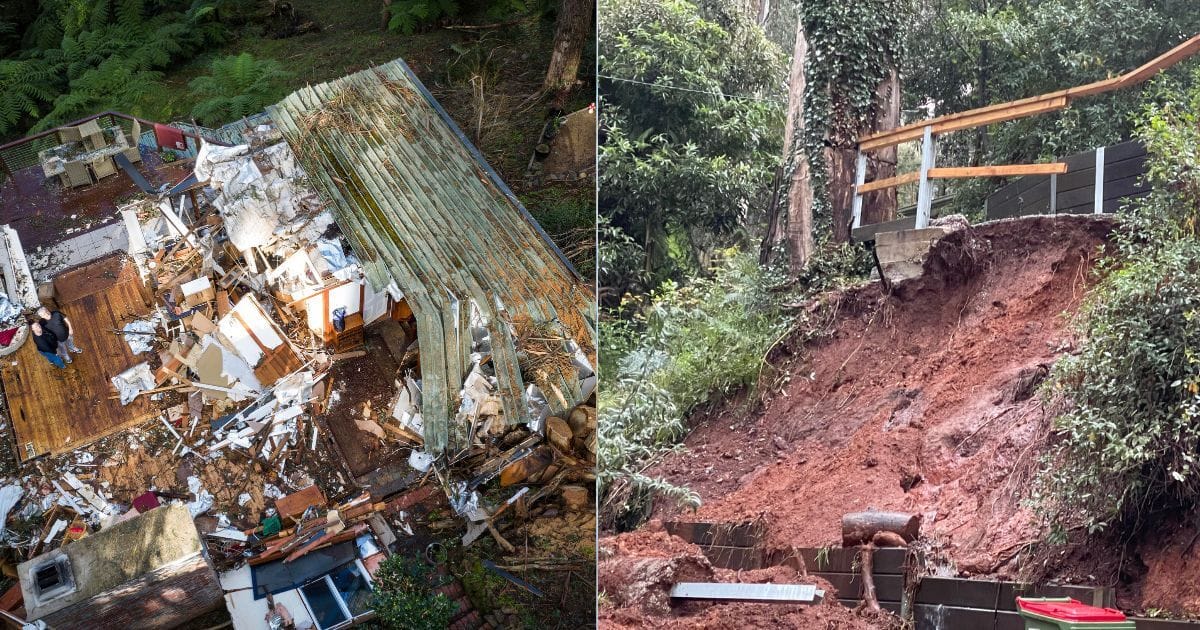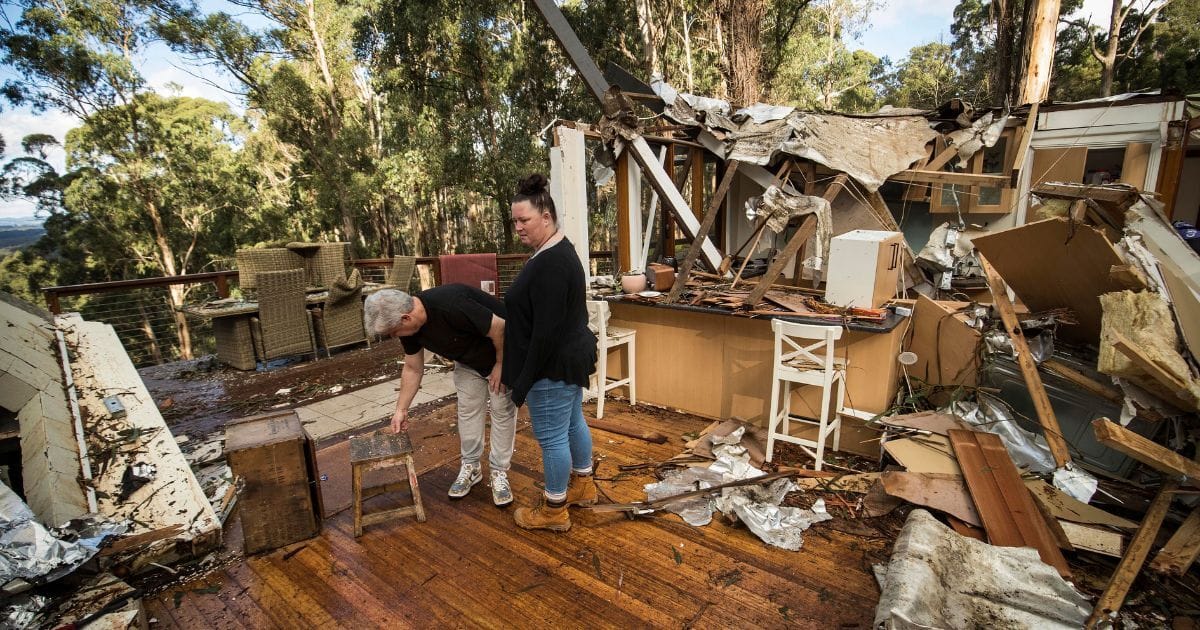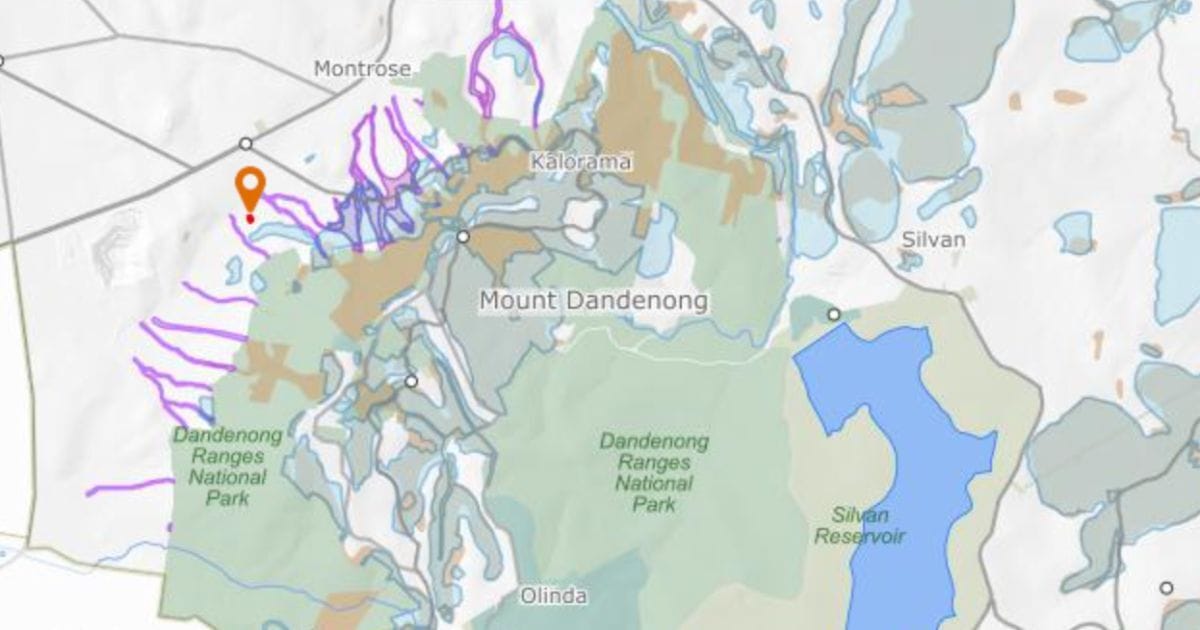“More susceptible”: How will new development restrictions decrease Kalorama’s landslide risk?
“Whilst we're able to work out where landslides can occur, we cannot predict when.”

Natalie and Lee Guest thought they’d found their “forever home” in Kalorama, a eastern Melbourne suburb on the north-western slopes of the Dandenong Ranges — until one night in June 2021, when four trees crashed through their house during a storm that tore through the Dandenongs.
“We’d lost everything,” Natalie told the Eastern Melburnian.
“We were then told a year later by council that our land was worthless.”
⁉️ What’s going on? In the wake of her home being destroyed, Natalie soon discovered she was unable to rebuild her home as the property was listed as having a “medium” landslide risk within Yarra Ranges Council’s Erosion Management Overlay (EMO).
With no other option, the mother of one and small business owner spent months pushing the council to change its EMO rules – a fight that eventually paid off. In March 2024, the rules were changed and she and her husband have since rebuilt their home.
Now, the council is preparing to roll out another major EMO update aimed at preventing future disasters.

Husband and wife Lee and Natalie Guest were left devastated after their Kalorama home was destroyed during the June 2021 storms
🚧 What is an EMO? If your property falls under an EMO, you must get a geotechnical report before doing any building or earthworks. These reports usually cost between $700 and $3,000+.
Yarra Ranges Council has also warned homeowners to check their insurance coverage as most home insurance policies don’t cover landslides — unless a storm causes them.
The new draft EMO maps are based on LiDAR radar mapping and geotechnical surveys, replacing data from the 1990s that relied on contour maps and aerial photos from the 1960s.
✍️ What’s changing? The proposed changes would include adding 290 properties at risk of debris flow or mudslides to a new sub-section known as Schedule 2, with properties in Montrose and Kalorama among new additions.
Overall, 13,724 properties in total would be covered by the new EMOs — a net increase of 2,365.
Submissions on the proposal close Sunday, October 26.

Properties in Montrose and Kalorama are among proposed additions to Schedule 2 of the EMO (in purple) - aimed at protecting homes at risk of mudslides or debris flow.
⛰️ Why are landslides getting worse and more frequent? 🗣️Dr Milton Speer, a meteorologist from the University of Technology in Sydney, said rising temperatures caused by climate change have pushed storm conditions further south and made them more erratic.
"It's very hard to predict when and exactly where these little pockets of extreme rainfall will hit the hardest,” he told the Eastern Melburnian.
“However, more often they will occur on higher topography that faces directly into the wind or from thunderstorms.”
Speer also said droughts “can make the topsoil lighter”, making it more at risk of erosion via wind or heavy water flows.
Bushfires, land clearing and construction also add to the problem.
🗣️ Engineering geologist Darren Paul said the Dandenongs have become especially vulnerable to landslides and mudslides.
“Whilst we're able to work out where landslides can occur, we cannot predict when,” he said.
“Humans have made the Dandenongs more susceptible to landslides because we've altered the natural landscape.”
🙋 Community concerns: Kalorama Country Fire Authority captain Bill Robinson has lived in the area since 1982 and led the local response after the 2021 storm, which destroyed 44 houses and damaged around 110 more.
While he supports sensible development, Robinson worries the new EMOs could stop people from rebuilding after another disaster.
“My insurance company is not going to pay for the block of land, my insurance company is only going to pay for the house,” Robinson told the Eastern Melburnian.
😰 Don’t panic: Despite her own long fight, Natalie Guest said residents should stay calm about the changes.
“Don’t rush into selling,” she said.
“Don’t let it be detrimental to how you live.”
🏘️ Council consultation: Yarra Ranges Council’s director of Planning and Sustainable Futures, Kath McClusky, said the council was “really pleased” with the level of community engagement and encouraged residents to ask questions or make submissions.
To have your say, visit the Shaping Yarra Ranges website.
Otherwise, the council will be accepting submissions sent via email to [email protected] (with C225 in the subject line), or in the post to Design and Place, Yarra Ranges Council, PO Box 150, Lilydale, 3140.




